Is your fence showing signs of wear and tear? Fence damage can occur for a variety of reasons, from broken posts to missing boards.
We will explore the common causes of fence damage, how to assess the extent of the damage, the tools needed for repairs, and the different types of damage you may encounter.
Find step-by-step instructions on how to fix each type of damage and learn preventative measures to keep your fence in top condition. Let’s get started on learning how to fix a fence!
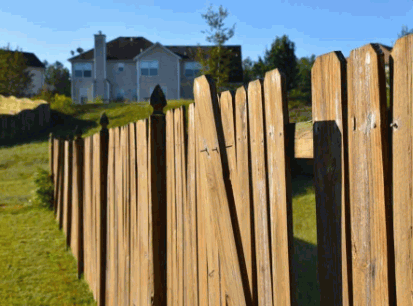
Why Do Fences Need To Be Fixed?
Fences play a crucial role in enhancing the aesthetic appeal and security of properties, but over time, they can suffer from various types of damage due to factors such as weather conditions, physical impacts, or natural wear and tear, necessitating timely fence repair to maintain their functionality and appearance.
Discover more: Can Vinyl Fencing Be Repaired
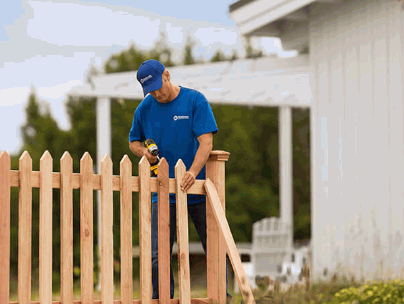
What Are The Common Causes Of Fence Damage?
Common causes of fence damage include rotting due to prolonged exposure to moisture, physical impacts from falling branches, and general wear and tear that can lead to leaning or sagging structures.
Rotting due to moisture is often one of the most significant culprits behind fence deterioration. When wood is continuously exposed to wet conditions, it can weaken the material over time, compromising the fence’s structure. Impacts from falling branches or other objects can cause immediate damage, leading to cracks or breakages in the fence panels.
Leaning and sagging posts are common issues that arise from improper installation, ground settling, or lack of maintenance. These problems not only detract from the fence’s appearance but also weaken its stability, making it more susceptible to damage and collapse.
Assessing The Damage
Assessing the damage to your fence is the first critical step in any repair process, allowing you to determine the extent of the issues and the necessary actions to restore its integrity, whether it involves minor fixes or significant replacements.
How To Determine The Extent Of The Damage
To determine the extent of the damage to your fence, perform a detailed inspection focusing on key components such as posts, panels, rails, and brackets.
Begin by visually examining each post for any signs of rot or decay, as these are common issues that compromise the stability of the entire fence structure. Look closely at the panels and rails, checking for cracks, warping, or discoloration that may indicate damage from weather exposure or age.
Inspect the brackets holding the various sections together; ensure they are securely fastened and not loose or damaged. Document any findings with detailed notes and photographs to accurately assess the repair needs and plan an effective course of action.
What Tools Will You Need?
To effectively repair a damaged fence, you will need a variety of tools including brackets, screws, epoxy, wood filler, and other basic hand tools.
Brackets are essential for reinforcing weakened sections of the fence, providing stability and support. They help in holding together loose or broken parts to ensure a sturdy repair. Screws play a crucial role in securing these components in place, preventing any further damage or potential hazards.
Epoxy is used to fill cracks and gaps in the fence, creating a seamless finish and enhancing its durability. It acts as a strong adhesive to bind surfaces together and seal off any openings that may compromise the structure.
Wood filler is handy for addressing minor damages such as dents or small holes. Applying wood filler helps to smoothen surface imperfections and restore the appearance of the fence, making it aesthetically pleasing.

Types Of Fence Damage
Understanding the different types of fence damage is crucial for identifying the appropriate repair techniques and materials needed to restore the fence’s functionality and appearance.
Broken Or Damaged Posts
Broken or damaged posts are a common issue that can significantly compromise the stability of a fence, often requiring replacement or reinforcement with concrete to restore support.
One of the main causes of broken or damaged posts is rot, which weakens the wood over time, especially in moist environments. The physical impact of accidents, severe weather conditions, or even animal activity can also contribute to post-degradation.
Regarding repairing or replacing posts, using concrete is a popular method to enhance stability. Concrete can be poured into post holes to create a solid foundation, providing extra durability and support.
Signs that indicate a post needs replacement rather than repair include excessive leaning, severe rot, or visible cracks that compromise the structural integrity of the post. In such cases, replacing the post entirely may be necessary to ensure the fence’s long-term stability.

Loose Or Missing Boards
Loose or missing boards can affect the aesthetic and functional integrity of a fence, typically requiring the tightening of screws or the use of wood filler and replacement boards.
When boards on a fence become loose or go missing, it not only compromises the overall look but can also weaken the structure, posing a safety hazard. To address loose boards, start by checking the screws that hold the boards in place. Use a screwdriver to firmly tighten any loose screws.
For minor damages, applying wood filler can help fill gaps and stabilize the boards. Simply follow the manufacturer’s instructions for the application process, ensuring a smooth finish.
If the boards are beyond repair, replacing them is the best option. When selecting replacement boards, it’s crucial to match the type, size, and color to maintain a cohesive appearance. This meticulous attention to detail ensures a seamless blend with the existing fence for a polished finish.

Wobbly Or Leaning Fence Panels
Wobbly or leaning fence panels are a clear sign of structural issues that can often be corrected by installing brackets or braces to provide additional support and realignment.
Loose posts due to degraded foundations or improper installation are frequent culprits behind wobbly panels. Similarly, ground movement caused by soil erosion or nearby tree roots can lead to panel misalignment. To stabilize the panels, begin by assessing the extent of the issue and ensuring you have the necessary materials, including suitable brackets and braces.
When installing brackets, ensure they are positioned securely against the posts and panels. Use screws or bolts to attach the brackets firmly, taking care not to overtighten which can cause damage. Braces should be placed diagonally between the panel and post, providing added stability.
Before finalizing the repair, check that the panels are level and plumb using a spirit level. Adjust the brackets or braces as needed to ensure proper alignment. Regular inspections and maintenance can help prevent recurring issues, prolonging the lifespan of your fence panels.
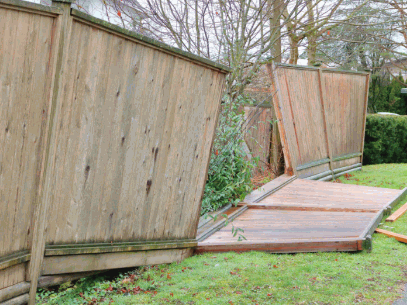
How To Fix Each Type Of Damage
Effectively repairing your fence involves addressing each type of damage with specific techniques and materials to restore its stability, functionality, and appearance.
Replacing Broken Or Damaged Posts
Replacing broken or damaged posts involves removing the old post, setting a new one in concrete, and possibly using repair spikes and post caps for added durability and aesthetic appeal.
When replacing a damaged fence post, the initial step is to carefully extract the old post by digging around it and loosening the surrounding soil. This process ensures minimal disturbance to the rest of the fence structure. After the old post is removed, the hole is then prepared by clearing any debris and making sure the dimensions are suitable for the new post.
The next step entails setting the new post firmly in place with concrete. The post should be aligned correctly and plumb to maintain the integrity of the fence line. Once the post is secure in the concrete, repair spikes can be used to reinforce its attachment to the adjacent sections of the fence, providing additional strength.
To enhance both the structural integrity and visual appeal, post caps can be added to the top of the new post. These caps not only offer a decorative touch but also help protect the post against water infiltration and potential rot. By following these steps diligently, a fence with replaced posts can regain its functionality and aesthetic charm.
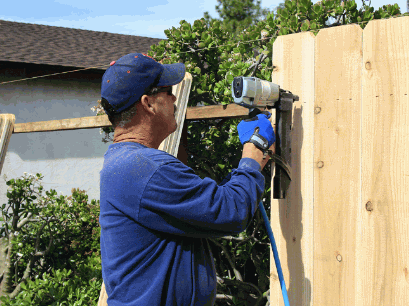
Repairing Loose Or Missing Boards
Repairing loose or missing boards typically involves securing them with screws, using wood filler for minor damages, and applying staining to match the rest of the fence.
Regarding securing loose boards with screws, the first step is to gather the necessary tools such as a drill, screws, and a screwdriver. Begin by identifying the loose boards and determining the best placement for the screws to provide maximum support.
- For filling minor gaps with wood filler, make sure to choose a filler that matches the color of the existing wood. Apply the filler generously, smooth it out, and allow it to dry completely before sanding it down for a seamless finish.
- To apply stain or sealant, select a product that is suitable for outdoor use and matches the natural tone of the wood. Use a brush or rag to evenly coat the boards, ensuring full coverage for protection against weather elements.

Strengthening Wobbly Or Leaning Fence Panels
Strengthening wobbly or leaning fence panels involves reinforcing them with brackets or braces and securing the stringers to provide additional stability and realignment.
Once the necessary tools are gathered, begin by installing the brackets or braces at strategic points along the fence panels. These brackets or braces act as supports, helping distribute the weight evenly and reducing the strain on weak areas. Ensure that the brackets are securely attached to both the panels and the posts, using appropriate screws or bolts for reinforcement. Next, align the stringers horizontally across the panels, fixing them firmly in place to further strengthen the structure. This step not only adds stability but also helps in preventing future sagging or misalignment issues.
Preventative Measures For Future Fence Repair
Implementing preventative measures such as regular maintenance, thorough inspections, and applying sealing and weather protection can significantly extend the lifespan of your fence and reduce the need for frequent repairs.
Regular Maintenance And Inspections
Regular maintenance and inspections of your fence, focusing on posts and boards, can help identify and address minor issues before they develop into significant problems.
Checking the posts involves ensuring they are securely anchored in the ground and not showing any signs of leaning or instability. Examining the boards for any cracks, splinters, or rot is crucial to maintaining the structural integrity of the fence. Inspecting for loose nails or screws that may need tightening can prevent boards from becoming loose or falling off.
To ensure the long-term health of your fence, consider applying a protective sealant or stain every few years to protect the wood from weathering and moisture damage. Regularly clearing debris such as leaves, dirt, or vegetation that may accumulate around the base of the fence can prevent moisture buildup and potential rot.
Protecting Your Fence From Weather Damage
Protecting your fence from weather damage involves applying sealants and staining to create a protective barrier against the elements and prolong the fence’s lifespan.
Sealants and stains play a crucial role in safeguarding your fence as they help to repel moisture, prevent UV damage, and resist mold and mildew growth. Applying a sealant acts as a shield that blocks rainwater from penetrating the wood, thus reducing the risk of rot and decay.
Similarly, staining provides an extra layer of protection by enhancing the fence’s natural beauty while also adding a barrier against sun exposure and insect infestation. These treatments not only boost the aesthetic appeal of your fence but also extend its durability significantly.
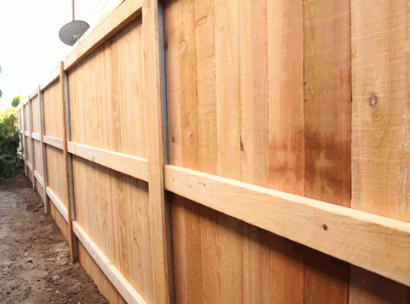
Proper Installation Techniques
Proper installation techniques, such as setting posts in concrete and using brackets for additional support, are crucial for ensuring the longevity and stability of a fence.
When installing a fence, it is essential to start by accurately measuring and marking the layout to ensure proper alignment. Securely anchoring the corner and end posts in concrete will provide a sturdy foundation for the entire structure. Utilizing brackets to reinforce connections between rails and posts can prevent sagging and shifting over time.
It is advisable to check local zoning regulations and property lines before commencing installation to avoid any legal issues. Regular maintenance, such as inspecting for damage and repainting when needed, can further extend the lifespan of your fence.


